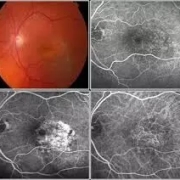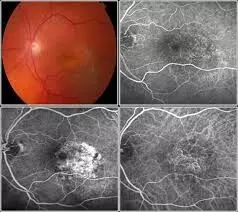‘Long flu’ has emerged as consequence similar to long COVID

Since the COVID-19 pandemic began, extensive research has emerged detailing the virus’s ability to attack multiple organ systems, potentially resulting in a set of enduring and often disabling health problems known as long COVID. Now, new research from Washington University School of Medicine in St. Louis and the Veterans Affairs St. Louis Health Care System indicates that people hospitalized with seasonal influenza also can suffer long-term, negative health effects, especially involving their lungs and airways.
The new study comparing the viruses that cause COVID-19 and the flu also revealed that in the 18 months after infection, patients hospitalized for either COVID-19 or seasonal influenza faced an increased risk of death, hospital readmission, and health problems in many organ systems. Further, the time of highest risk was 30 days or later after initial infection.
“The study illustrates the high toll of death and loss of health following hospitalization with either COVID-19 or seasonal influenza,” said senior author Ziyad Al-Aly, MD, a clinical epidemiologist at Washington University. “It’s critical to note that the health risks were higher after the first 30 days of infection. Many people think they’re over COVID-19 or the flu after being discharged from the hospital. That may be true for some people. But our research shows that both viruses can cause long-haul illness.”
The findings are published Dec. 14 in The Lancet Infectious Diseases.
The statistical analysis spanned up to 18 months post-infection and included a comparative evaluation of risks of death, hospital admissions and 94 adverse health outcomes involving the body’s major organ systems.
“A review of past studies on COVID-19 versus the flu focused on a short-term and narrow set of health outcomes,” said Al-Aly, who treats patients within the VA St. Louis Health Care System and is an assistant professor of medicine at Washington University. “Our novel approach compared the long-term health effects of a vast array of conditions. Five years ago, it wouldn’t have occurred to me to examine the possibility of a ‘long flu.’ A major lesson we learned from SARS-CoV-2 is that an infection that initially was thought to only cause brief illness also can lead to chronic disease. This revelation motivated us to look at long-term outcomes of COVID-19 versus flu.
“We wanted to know whether and to what degree people with flu also experience long-term health effects,” Al-Aly said. “The big answer is that both COVID-19 and the flu led to long-term health problems, and the big aha moment was the realization that the magnitude of long-term health loss eclipsed the problems that these patients endured in the early phase of the infection. Long COVID is much more of a health problem than COVID, and long flu is much more of a health problem than the flu.”
However, the overall risk and occurrence of death, hospital admissions, and loss of health in many organ systems are substantially higher among COVID-19 patients than among those who have had seasonal influenza, Al-Aly said. “The one notable exception is that the flu poses higher risks to the pulmonary system than COVID-19,” he said. “This tells us the flu is truly more of a respiratory virus, like we’ve all thought for the past 100 years. By comparison, COVID-19 is more aggressive and indiscriminate in that it can attack the pulmonary system, but it can also strike any organ system and is more likely to cause fatal or severe conditions involving the heart, brain, kidneys and other organs.”
The researchers analyzed de-identified medical records in a database maintained by the U.S. Department of Veterans Affairs, the nation’s largest integrated health-care delivery system. They evaluated information involving 81,280 patients hospitalized for COVID-19 at some point from March 1, 2020, through June 30, 2022, as well as 10,985 patients hospitalized for seasonal influenza at some point from Oct. 1, 2015, through Feb. 28, 2019.
Patients represented multiple ages, races and sexes.
Regarding both viruses, patient vaccination status did not affect results. Those in the COVID-19 cohort were hospitalized during the pre-delta, delta and omicron eras.
During the overall 18-month study period, patients who had COVID-19 faced a 50% higher risk of death than those with seasonal influenza. This corresponded to about eight more deaths per 100 persons in the COVID-19 group than among those with the flu.
Although COVID-19 showed a greater risk of health loss than seasonal influenza, infection with either virus carried significant risk of disability and disease. The researchers found COVID-19 exhibited increased risk of 68% of health conditions examined across all organ systems (64 of the 94 adverse health outcomes studied), while the flu was associated with elevated risk of 6% of health conditions (six of the 94) — mostly in the respiratory system.
Also, over 18 months, COVID-19 patients experienced an increased risk of hospital readmission as well as admission to an intensive care unit (ICU). For every 100 persons in each group, there were 20 more hospital admissions and nine more ICU admissions in COVID-19 than flu.
“Our findings highlight the continued need to reduce the risk of hospitalization for these two viruses as a way to alleviate the overall burden of health loss in populations,” Al-Aly said. “For both COVID-19 and seasonal influenza, vaccinations can help prevent severe disease and reduce the risk of hospitalizations and death. Optimizing vaccination uptake must remain a priority for governments and health systems everywhere. This is especially important for vulnerable populations such as the elderly and people who are immunocompromised.”
In both COVID-19 and the flu, more than half of death and disability occurred in the months after infection as opposed to the first 30 days, the latter of which is known as the acute phase.
“The idea that COVID-19 or flu are just acute illnesses overlooks their larger long-term effects on human health,” Al-Aly said. “Before the pandemic, we tended to belittle most viral infections by regarding them as somewhat inconsequential: ‘You’ll get sick and get over it in a few days.’ But we’re discovering that is not everyone’s experience. Some people are ending up with serious long-term health issues. We need to wake up to this reality and stop trivializing viral infections and understand that they are major drivers of chronic diseases.”
Reference:
Yan Xie, Taeyoung Choi, Ziyad Al-Aly. Long-term outcomes following hospital admission for COVID-19 versus seasonal influenza: a cohort study. The Lancet Infectious Diseases, 2023; DOI: 10.1016/S1473-3099(23)00684-9
Powered by WPeMatico



















